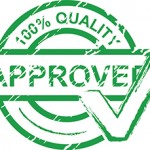 Walk into a hospital anywhere in the country and announce the words “Joint Commission is here” and watch the response: Desperation and panic!
Walk into a hospital anywhere in the country and announce the words “Joint Commission is here” and watch the response: Desperation and panic!
I think the looming idea of Joint Commission surveyors in a hospital puts most administrators on edge.
The mere fact that these visits are unannounced is enough to make anyone go into a panic.
Founded in 1951, the Joint Commission seeks to continuously improve health care for the public by evaluating health care. The Joint Commission is an independent, not-for-profit group that administers accreditation programs for hospitals.
The Joint Commission is the accreditation authority, and any hospital that wishes to be seen as one that provides quality care works to meet its standards.
How can you get your staff and board of directors to ease their stress levels during Joint Commission audits? Follow these steps.
1. Hold an “Accreditation Kick-Off”
- Include an introduction to the accreditation process, tips on gathering materials and discuss who will be directly vs. indirectly involved.
- Gather as many staff and board members together as possible and outline the positives of accreditation. Make it fun! This is your opportunity to gain the buy-in from staff and board members that is needed for a successful accreditation process. If you are excited about what lies ahead, they will be too. It is important to remember that staff do not need to memorize the Joint Commission manual. The most important thing surveyors look for is that the staff is aware of how to contact the Joint Commission if a safety issue arises, and that they also know where to find information on the Joint Commission requirements if they need it.
2. Hold a Quarterly Mock Survey
- During the mock survey, all events that would normally take place when surveyors arrive would be put into action.
3. Be diligent with charting and documentation
- Proper and adequate medical documentation is essential for quality of medical care and health care services throughout the industry, from receiving proper and correct treatment to receiving payment benefits from your health insurance provider. Adequate medical documentation assures patient confidentiality and ensures that standards of care are being met.
- Distribute satisfaction survey cards to all patients for feedback on quality of medical care, institution cleanliness and overall happiness with doctors and nurses. Review and post the results with faculty and staff at Joint Commission readiness meetings.
4. Have a location for staff to review Joint Commissions standards
- Provide an array of information, including a Q&A section, National Patient Safety Goals for your organization and much more. This location should be readily available 24/7 for your staff so they can stay up-to-date on the latest readiness tips and information.
5. Automate
- The days where it’s considered acceptable practice to provide Joint Commission auditors with paperwork from a filing cabinet are long gone. Aside from being inefficient, it’s far more prone to mistakes. Automating compliance matters makes it easier for health systems to monitor staff credentials and other compliance related issues. And when it’s audit time? The stress won’t even exist.
At the end of the day, if you are doing your job and are prepared, The Joint Commission Survey should be a formality, a formality that will allow you to be accredited to ensure maximum quality healthcare for your organization.
 See demo
See demo